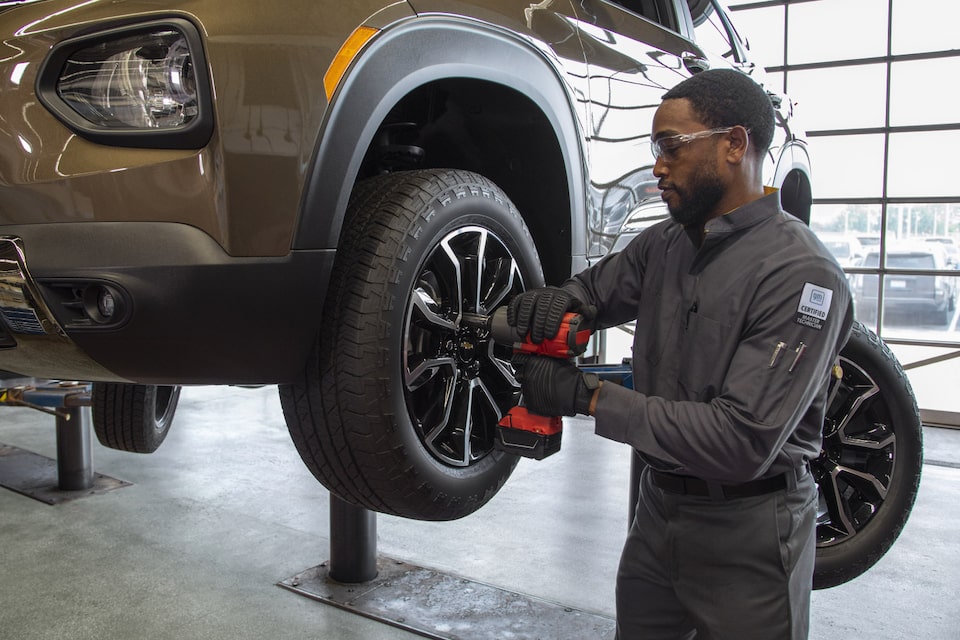Tire Service: The Effect of Weather
When it comes to making sure ideal efficiency and security on the road, understanding the impact of weather conditions on tire service is critical. In this conversation, we will explore the intricate relationship in between weather condition problems and tire service, shedding light on the significance of weather-specific tire maintenance practices and considerations.
Warmth and Tire Efficiency
When revealed to high temperature levels, tires experience adjustments in performance that can substantially affect car safety and handling. The heat created from long term driving or heat conditions causes the tire rubber to soften, bring about lowered walk life and enhanced wear. As the rubber becomes softer, the tire's grasp when driving decreases, affecting braking distances and total traction. In extreme instances, extreme heat can also trigger tire blowouts, posing an extreme security risk to the lorry and its passengers.
Additionally, high temperature levels can accelerate the process of tire aging, triggering the rubber to deteriorate much more swiftly. To minimize the effects of warm on tire efficiency, vehicle drivers ought to frequently check their tire pressure, turn tires to make sure also use, and check for any kind of indicators of damages.
Cold Climate Results
Cold climate problems can have a considerable impact on tire efficiency and safety and security. In cool weather condition, tires might likewise shed air pressure a lot more rapidly, which can affect handling and gas performance.
To reduce the effects of chilly weather on tires, it is vital to frequently inspect tire pressure and inflate them to the producer's suggested degrees. Utilizing winter or all-season tires created for winter problems can also enhance grip and grip on icy or snowy roadways - tire shop morris. Appropriate tire upkeep, including routine inspections for wear and damage, ends up being much more important during chillier months to ensure optimum efficiency and safety
Rainy Conditions Effect
Throughout rainy problems, tire performance and security can be considerably influenced by the wet roadway surface areas and lowered exposure. The walk pattern of tires plays a crucial duty in maintaining grip on wet roads. Tires with worn-out treads are more susceptible to hydroplaning, where a layer of water develops between the road and the tire surface, causing loss of traction. To combat this, drivers must consistently evaluate their tires for adequate step deepness and take into consideration purchasing tires especially made for damp problems.

Snow and Tire Safety
Snow-covered roads pose distinct difficulties for drivers, highlighting the importance of correct tire selection and upkeep. When driving in snowy problems, having the best tires can make a substantial distinction in safety and efficiency. Winter season tires are designed with special rubber substances and tread patterns to give better grip on snow and ice contrasted to all-season tires. The much deeper footsteps and sipes of winter season tires help grasp the road much better, reducing the threat of moving and sliding.
In enhancement to utilizing winter months tires, it is crucial to guarantee they are appropriately pumped up. Cold weather condition can create tire pressure to drop, influencing grip and handling (mopar tire service specials). Routinely inspecting and preserving the appropriate tire stress is important for ideal performance in snowy conditions

Weather-Related Tire Maintenance
When encountered with different weather, appropriate tire upkeep comes to be an essential element of automobile safety and performance. Weather-related tire maintenance incorporates a series of techniques focused on guaranteeing optimal tire function and durability in different weather situations. One key aspect of weather-related tire maintenance is tire pressure guideline. Rising and fall temperature levels can trigger tire stress to vary, influencing grip and fuel effectiveness. Routinely inspecting and readjusting tire stress according to maker referrals is vital for secure driving in changing climate problems. Furthermore, tire step deepness plays a substantial duty in link taking care of different climate elements. Tires with ample tread depth offer better grip on wet or icy roadways, reducing the a knockout post risk of skidding or hydroplaning. Examining tire step regularly and changing tires when step wear reaches a specific deepness is essential for keeping traction and security in damaging climate. By focusing on weather-related tire maintenance, drivers can improve safety and security, boost lorry efficiency, and lengthen the life-span of their tires.
Verdict
In verdict, climate problems have a substantial impact on tire efficiency and safety and security. From warmth impacting tire pressure and put on to chilly climate decreasing grip, it is necessary to consider the weather condition when maintaining and making use of tires. Stormy conditions can reduce hold and lead to hydroplaning, while snow can boost the threat of crashes if tires are not correctly outfitted. Weather-related tire upkeep is essential in ensuring optimum efficiency and safety and security on the roads.
In this conversation, we will explore the elaborate connection in between weather condition problems and tire solution, losing light on the relevance of weather-specific tire upkeep techniques and considerations.

Comments on “Trustworthy Tire Shop Morris: Your Destination for High Quality Tires and Providers”